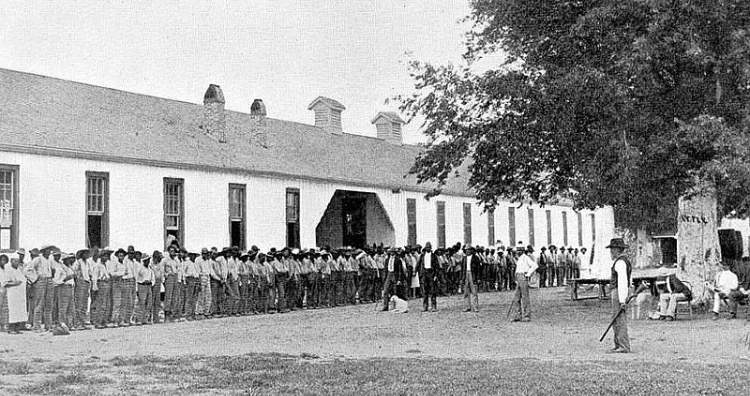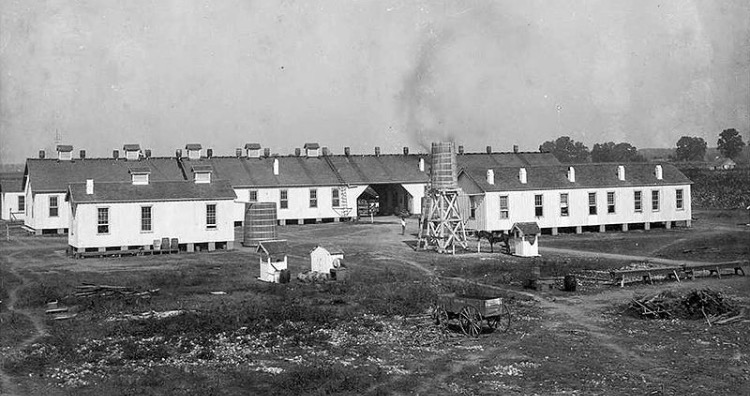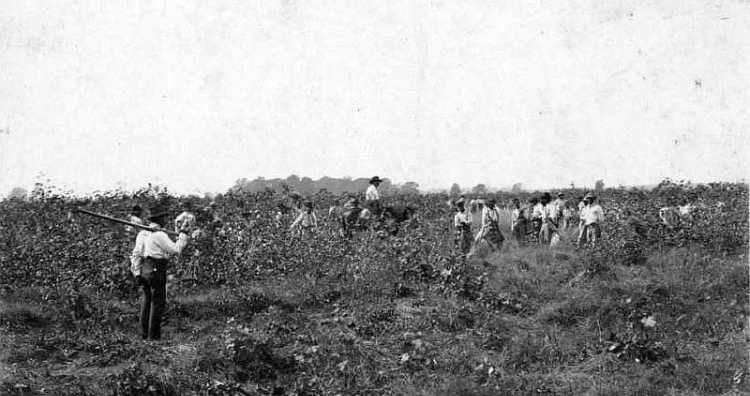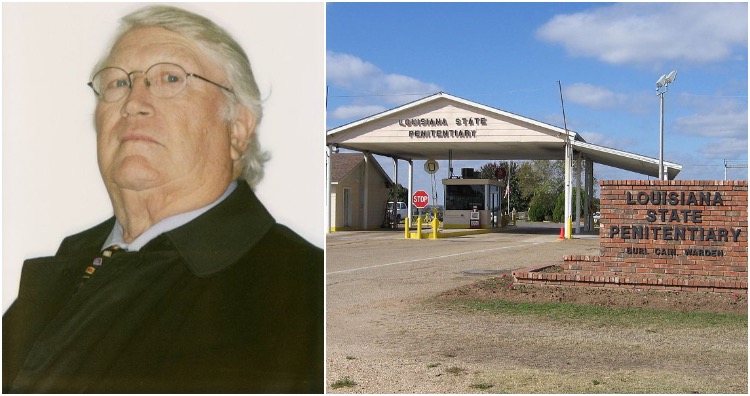Known as “Alcatraz of the South” and “The Farm,” the Angola Prison is considered to be one of the most brutal prisons in the history of the United States. It was a nightmare for convicts to be sent to the prison. In the 1930s, hardened prisoners broke down upon learning of their sentence there. At one point, 10% of Angola prisoners were stabbed.
The roots of the Angola Prison goes back to 1880. It was created by a former Confederate major, Samuel Lawrence James, who purchased a plantation and started storing prisoners. He named the plantation “Angola” after the country from where the majority of the slaves originated.

The Angola Prison, officially known as “The Louisiana State Penitentiary,” is a maximum security prison operated by the Louisiana Department of Public Safety & Corrections. Originally, the prison was a plantation owned by Isaac Franklin in the 1830s, a slave trader and a planter. He named it “Angola” because the majority of the salves that were brought to Louisiana were from the African country Angola. The plantation had multiple owners in the next 50 years. Finally, it was purchased by Samuel Lawrence James in 1880. James was a former officer of the Confederate States Army (CSA).
It was James who turned the plantation into a prison for storing prisoners. This was possible through the convict-leasing system. As early as 1844, Louisiana used to lease out convicts as slaves to private corporations such as plantation owners. The corporation or the lessee was responsible for taking care of the convicts and even housing them. So, all the convicts at the Angola plantation were under James’s care and without state intervention.
Currently, the prison has 6,300 prisoners. To look after the prisoners, it has 1,800 staff that includes correction officers, maintenance workers, janitors, and wardens. The prison is situated towards the end of the Louisiana Highway 66 and is bordered by the Mississippi River on three sides.
Major James abused, underfed, and subjected the convicts to unregulated violence. They were often made to work until death under harsh conditions. After stories of brutality leaked from its walls, the state took control of the prison. Unfortunately, conditions didn’t improve as the wardens instituted by the state were equally abusive.

As Major James had full authority over the convicts, he used them to his advantage. He resorted to violence when it came to managing the convicts. Also, the state passed laws that if convicts misbehaved or had disagreements with the master, then they would need to pay minor fees and fines as punishment. This gave an edge to Major James who abused the convicts who misbehaved. He even used to underfeed them and made them work extra-long hours under harsh conditions. Some convicts even lost their lives while working on the plantation.
When stories of abuse and harsh living conditions escaped the walls of the plantation, the state took full control of the prison in 1901. But even that was in vain. The state never allocated proper funds for the betterment of the prison and continued decreasing costs. In the 1940s, a former Angola prisoner, William Sadler, wrote a series of articles depicting the inhumane life in the prison. He described a warden who would walk around with a three-foot leather strip to lash the prisoners. Sadler wrote, “[He] raised it over his head, with both hands, and brought it down with a sharp pop like a pistol shot on the naked man’s back. One … two … three … twenty; the count goes beyond thirty … the man moans, pleads for mercy, calls on God. The captain tells him: ‘You bettah call on someone closer to you—someone who kin help you!’ ”
Conditions got so bad in the 1950s that 31 inmates sliced their Achilles tendons to bring attention to their poor treatment. It is said that hardened criminals broke down upon being notified that they were being sent to Angola. In the early ‘70s, an average of 12 prisoners were stabbed to death each year.

When even the state failed to provide better conditions, the prisoners took matters into their own hands. A heart-wrenching incident took place in 1952. Thirty-one inmates slit their Achilles tendons to protest the harsh conditions in the prison. In the book, The Life and Legend of Leadbelly, the treatment at Angla prison was described as “probably as close to slavery as any person could come in 1930.” Criminals would break down when they were told that they have been sentenced to Angola. This is how bad the conditions were! Most often, the violence was the result of White-Black racial tensions. In the 1950s, each year one in every ten inmates received stab wounds.
The inmates who slit their tendons later came to be known as the “Heel String Gang.” Their action did not go all in vain. National news agencies started writing exposé stories on the living conditions at Angola prison. Collier’s Magazine‘s November 1952 issue referred to the prison as “the worst prison in America.” Margaret Dixon, the managing editor of the Baton Rouge Morning Advocate, worked towards bringing reform in the prison. Her efforts helped the prison to some length. In 1976, The Margaret Dixon Correctional Institution was opened named after her.
But still, violence could not be curbed. In the next few decades, sexual slavery became a common occurrence. Prisoners favored by the wardens were given guns to patrol as guards. In the 1970s, 12 inmates were stabbed on an average every year.
Burl Cain served as the warden from 1995 to March 7, 2016. He was known for making numerous improvements and lowering the rate of violence at the prison. Even though the violence is now long gone, controversies still leak out from the walls of the Angola prison.

Burl Cain took over as warden in 1995. At that time, it was one of the most violent prisons in the United States. In 1992, the prison had a record of 1,346 assaults, both inmate-on-inmate and inmate-on-staff. In 2014, the number decreased to 343, all thanks to Cain’s efforts. The new number might not look like a big success, but considering the number of violent incidents before, this offers a ray of hope.
What did Cain do that helped to decrease violence in the prison? He brought Christ into the prison. Cain asked the New Orleans Baptist Theological Seminary to visit the prison and initiate an ordination program. With the start of the program, the ministers were able to turn thousands of their imprisoned brothers to Jesus.
Also, today the prison has a museum and yearly shows that bring funding into the prison. This, in turn, helps the authorities improve prison conditions leading to a better life in the prison. The prison’s famous rodeo, “Wildest Show in the South,” is held twice in a year and is conducted entirely by the inmates. In 2014, the rodeo brought in $1 million for the prison’s education and recreational programs.
Cain retired from his warden duties on March 7, 2016. Hopefully, his successors will keep up his work and do their best to keep violence in the prison to a minimum. Maybe one day, we will quit hearing the prison referred to as a “Hell on Earth.”